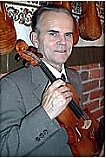According to the FierceBiotech pharma newsletter, Pfizer has been forced to halt development of its cholesterol drug Torcetrapib. The report says that the Data Safety Monitoring Board recommended the withdrawal of the drug from trials because of an “imbalance of mortality and cardiovascular events”.
I presume that’s management speak for “too many patients were having heart attacks and dying”.
The drug was set to become a Pfizer blockbuster, although I’d have hoped the marketing people would have come up with a snappier name before it went to market. “Based on all the evidence we have seen regarding Torcetrapib and in light of prior study results, we were very surprised by the information received from the DSMB,” the company stated. The DSMB has privileged access to the blind trials information so that it can make such decisions in the public and patient interest, but Pfizer claims the announcement was “totally unexpected and disappointing”.
The drug was set to replace Lipitor, a $12b a year blockbuster the patent on which is soon to expire. The FB newsletter says, that Pfizer “continue to invest in a wide range of pipeline opportunities across a diverse range of therapeutic areas.” Which, I presume, is management speak for “back to the drawing board”.
Apparently, just two days before this withdrawal, the company was enthusing about its benefits? Should we be policing drug trials even more stringently than we are now to prevent products getting so far before it is discovered there are serious issues with a particular trial?
 Infrared and NMR spectroscopy have possibly revealed one of the great secrets of the violin makers Stradivari and Guarneri del Gesu – they used chemical wood preservatives to help preserve their instruments and to improve the tonal quality. The discovery could help modern-day violin makers emulate more closely the properties of irreplaceable violins from the 18th Century and well as providing music conservationists with new insights on how to best preserve the antique instruments.
Infrared and NMR spectroscopy have possibly revealed one of the great secrets of the violin makers Stradivari and Guarneri del Gesu – they used chemical wood preservatives to help preserve their instruments and to improve the tonal quality. The discovery could help modern-day violin makers emulate more closely the properties of irreplaceable violins from the 18th Century and well as providing music conservationists with new insights on how to best preserve the antique instruments. A new study reveals that the static snapshots recorded in protein crystallography may be missing the bigger picture. Investigations of a bacterial protein using cryomicroscopy shows the protein in a balloon-like mode previously hidden from sold state studies. The discovery suggests that techniques complementary to X-ray crystallography are essential if molecular biology is to gain a complete understanding of protein structure.
A new study reveals that the static snapshots recorded in protein crystallography may be missing the bigger picture. Investigations of a bacterial protein using cryomicroscopy shows the protein in a balloon-like mode previously hidden from sold state studies. The discovery suggests that techniques complementary to X-ray crystallography are essential if molecular biology is to gain a complete understanding of protein structure.  Breast cancer remains the most common form of cancer among women but screening with mammography involves exposure to ionising radiation and suffers from a high rate of false positives that then require a definitive assay. In the December issue of the journal Biopolymers, researchers in India describe how Raman spectroscopy might be used to discriminate between normal, benign, and malignant breast tissue and so provide a simple and relatively non-invasive complement to a suspicious mammogram.
Breast cancer remains the most common form of cancer among women but screening with mammography involves exposure to ionising radiation and suffers from a high rate of false positives that then require a definitive assay. In the December issue of the journal Biopolymers, researchers in India describe how Raman spectroscopy might be used to discriminate between normal, benign, and malignant breast tissue and so provide a simple and relatively non-invasive complement to a suspicious mammogram.  Determining the chemical composition of 2000 stars in four of our neighboring dwarf galaxies, is a task even the biggest parallel analytical lab would probably baulk at taking on, although of course the referral fees would be stupendous. Nevertheless, a chemical survey of just such inter-galactic proportions has been carried out.
Determining the chemical composition of 2000 stars in four of our neighboring dwarf galaxies, is a task even the biggest parallel analytical lab would probably baulk at taking on, although of course the referral fees would be stupendous. Nevertheless, a chemical survey of just such inter-galactic proportions has been carried out.